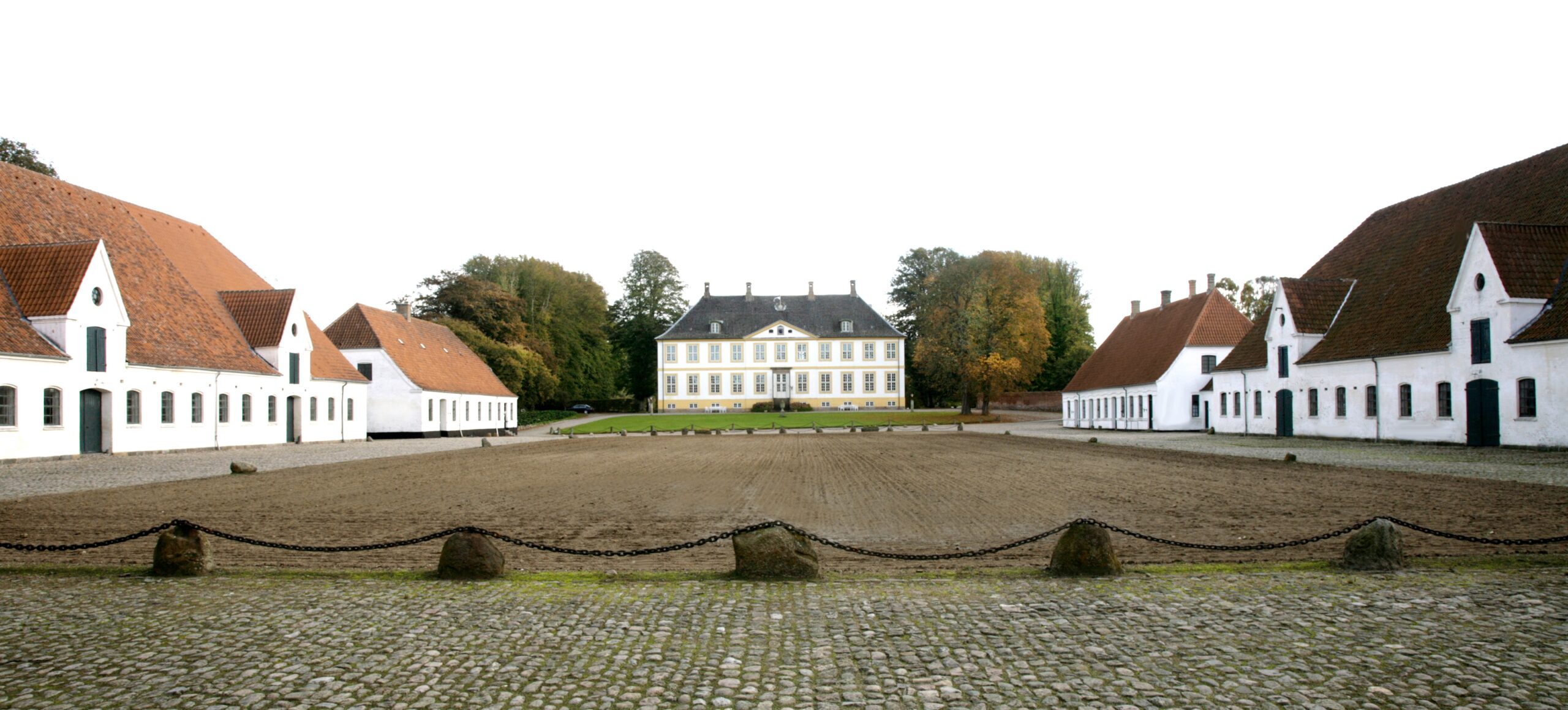Hagenskov
Humiliation, witchcraft and the joy of children – three notable fates from Hagenskov
Hagenskov Manor is home to a host of fascinating stories and remarkable fates. A ridiculed archbishop, a witch-hunter with postnatal depression and a birthing machine by the grace of god.
Jakob Erlandsen: the Archbishop in the dungeon
One day in 1259, the noblest of noblemen in the North is seen riding towards Hagenskov. The rider is Jakob Erlandsen, Archbishop of Lund. He is seated backwards on his horse, dressed in secular clothes and wearing a dunce’s cap decorated with fox tails.
On the orders of the king, the ridiculed bishop is thrown into the dungeons at Hagenskov.
This is the climax of a year-long battle between king and church, where the royal power proves that it is second to none in the country.
The dungeon can still be seen today in the old castle earthworks. It is believed that Jakob Erlandsen was imprisoned in the giant stone dungeon that you can stare down into today.
Anne Hardenberg: witches blamed for postnatal depression
One of the most remarkable surviving sources of information from the 1600s has to be Anne Hardenberg’s “Writings to my parents”. Anne Hardenberg marries around 1588, and five years later – heavily pregnant – she moves back in with her parents at Hagenskov Manor, where she gives birth to a son.
But motherhood is hard on her, leading to an intense depression. All of a sudden, she finds herself unable to speak, and instead she begins to set down the symptoms of her illness in writing. These include a revelation she experiences one night: she is one of god’s chosen few, and the cause of her unhappiness is to be found among witches and wizards.
Three years after the birth, two peasant women from West Fyn are bound firmly to ladders and toppled into the flames. They have been found guilty of calling down illness on Anne Hardenberg through witchcraft.

Birgitte Brockenhuus: unofficial Danish record in childbirths
Childbirth is a constant threat to the life and health of women in seventeenth century Denmark. So the unofficial record for childbirths must surely go to Birgitte Brockenhuus, who gave birth to 17 children over a period of 21 years – including two at an interval of just nine months. Incredibly, fully 16 of the 17 survive to adulthood.
One of these children is the son named Corfitz Ulfeldt, who goes on to enjoy a formidable career as rigshofmeister (Prime Minister at that time).
The manor tales are written by Linda Corfitz
